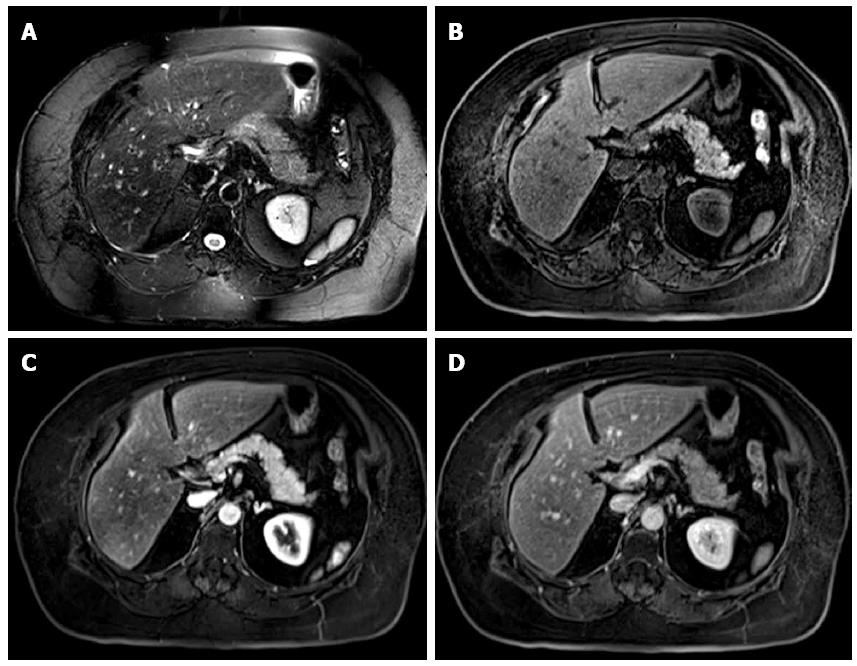Copyright
©2014 Baishideng Publishing Group Inc.
World J Gastroenterol. Oct 28, 2014; 20(40): 14760-14777
Published online Oct 28, 2014. doi: 10.3748/wjg.v20.i40.14760
Published online Oct 28, 2014. doi: 10.3748/wjg.v20.i40.14760
Figure 1 Normal pancreatic appearance on magnetic resonance imaging.
A: Axial single-shot turbo spin-echo T2-weighted (HASTE) image with fat-suppression; B: Axial pre-contrast 3D-GRE T1-weighted image with fat-suppression. Axial post-Gadolinium 3D-GRE T1-weighted image with fat-suppression during the hepatic arterial-dominant (C) and hepatic-venous phases (D). The pancreas demonstrates low T2 signal intensity (A) and high T1 signal intensity on pre-contrast images (B) reflecting high protein content of the exocrine gland. The pancreas demonstrates maximal enhancement on hepatic arterial-dominant phase (C); which fades on subsequent phases; reflecting a normal capillary blush.
- Citation: Manikkavasakar S, AlObaidy M, Busireddy KK, Ramalho M, Nilmini V, Alagiyawanna M, Semelka RC. Magnetic resonance imaging of pancreatitis: An update. World J Gastroenterol 2014; 20(40): 14760-14777
- URL: https://www.wjgnet.com/1007-9327/full/v20/i40/14760.htm
- DOI: https://dx.doi.org/10.3748/wjg.v20.i40.14760









